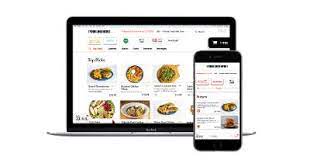Scrape Restaurant Food Menu Data Extraction
At Crossworlds, we provide restaurant menu data extraction services to capture food menu trends and additional items. With a strong emphasis on data precision, we deliver dependable restaurant food menu data to enhance your business insights. We gather menu information from leading food delivery platforms such as Deliveroo, UberEats, JustEat, Zomato, Doordash, and more.
Extracting Restaurant Menu Data and Analyzing Menu Trends

Menu Item Trends
Menu Item Popularity Analysis Using Data Scraping can unveil which dishes are most favored in the evolving food industry. By tracking customer preferences and ordering behaviors, this process provides essential insights for restaurant owners and food businesses alike. Identifying high-demand items in restaurant analytics enables strategic menu optimization, including promoting popular dishes or developing similar offerings.
Additions and Personalization Details
This involves gathering data from restaurants on how customers modify their orders, such as adding extra toppings, sides, or condiments, within the framework of restaurant data analytics. Understanding these preferences enables you to offer personalized menu options in restaurant market research and suggest additional items. By providing customization choices that cater to customer preferences and leveraging restaurant data, you can enhance the dining experience and increase revenue.


Pricing Strategies
Tracking pricing strategies entails monitoring changes in menu item pricing across different restaurants. This information provides valuable insights into pricing trends, enabling adjustments to your pricing strategy as needed. Staying competitive in the market requires understanding how competitors price their menu items. Insights into pricing strategies help in making informed decisions about setting menu prices and planning promotions.
Market Trends for Popular Menu Items
Analyzing market dynamics involves pinpointing which food items are gaining favor among customers. This data can inform menu updates to keep pace with evolving tastes. Adapting to emerging food trends can attract new patrons and retain current ones. You can capitalize on current culinary preferences by incorporating popular dishes into your offerings.


Pricing Strategy and Competitor Price Monitoring
This scenario entails tracking menu trends and pricing strategies, including the average menu pricing of competitors. It helps you stay informed about the competitive landscape within your industry, assisting in the development of effective menu pricing strategies. By closely monitoring competitors' menu trends and pricing strategies, you can quickly adapt your menu offerings to respond to market dynamics. This flexibility can provide a competitive advantage and enhance profitability in the dynamic restaurant industry.
Culinary Market Analysis
Performing a culinary diversity assessment involves evaluating the presence of distinct cuisines within a specific market. This process aims to pinpoint opportunities for introducing new culinary styles. Recognizing gaps in the market can inspire creative menu expansions and potentially reduce competition in offering distinctive cuisines, appealing to a specialized audience.

Benefits of Restaurant Menu Trends Data Scraping
Menu Enrichment
Examining data from food menus and additional items allows you to identify gaps or opportunities in your own menu. This insight enables you to expand or enrich your offerings to better satisfy customer preferences.
Innovative Product Creation
Menu item data and add-on insights can ignite new product ideas. You can introduce innovative dishes or supplementary options that appeal to your target market.
Customer Choices
Analyzing menu data allows you to discern customer inclinations, including popular dishes and supplementary options. This information empowers you to customize your offerings to align with customer preferences effectively.
Promotional Activities and Marketing
Insights from popular menu items and additional offerings can guide your promotional and marketing efforts. You can spotlight these items to attract a broader customer base.
Identification of Culinary Trends
Extracting menu data can help you pinpoint emerging food trends and adjust your offerings accordingly.
